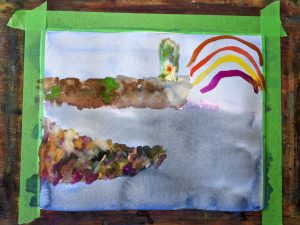
1. Gather the Materials
- watercolor paper
- copy paper cut to the same size as watercolor paper and also a narrow strip of paper (Tip: If the main sheets of paper are the same size, it’s easier for the artist to judge what size to make the templates)
- temporary glue
- pencil and eraser
2. Draw the Rock Formations
On the copy paper, draw a rough rectangle and a rough triangle as shown. These will be the rock formations.
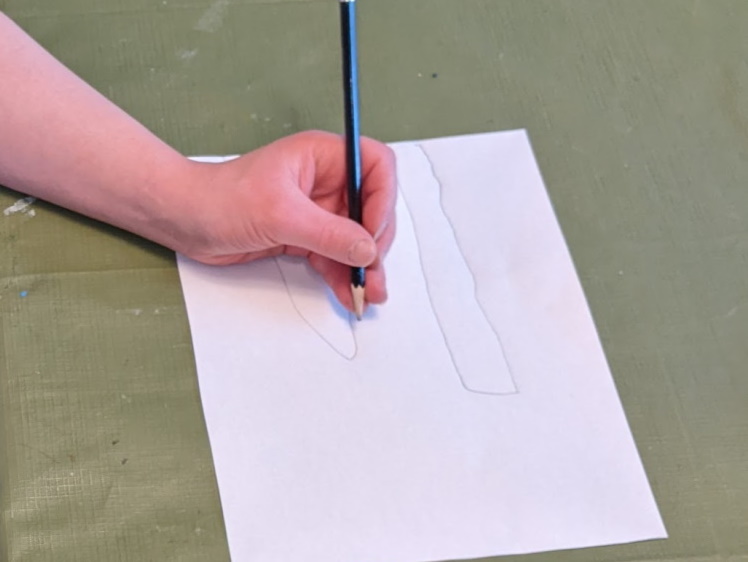
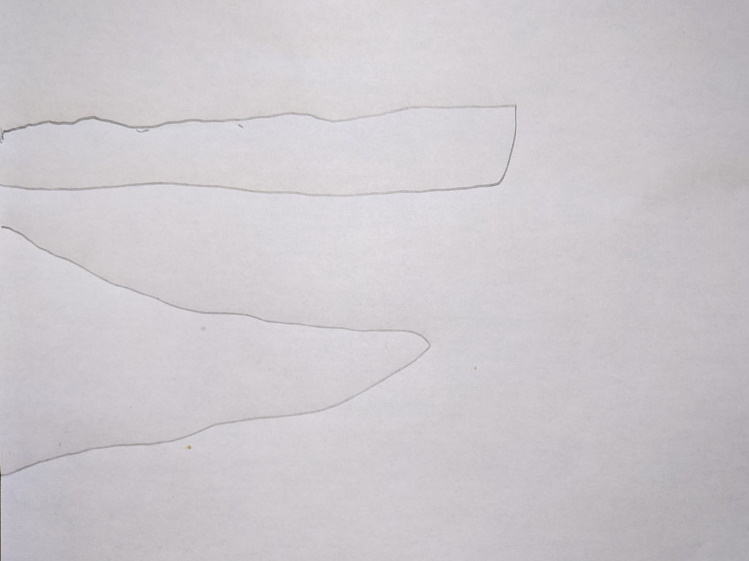
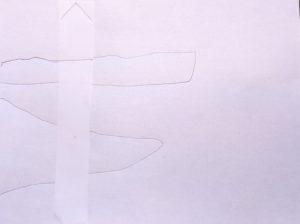
3. Draw the Lighthouse
Make the lighthouse using the narrow strip of paper as follows: Draw a little triangle for the roof and then measure off roughly how high the lighthouse should be using the rock formations sketch as a guide.
4. Cut Out Shapes
Cut out the lighthouse and the rock formations.

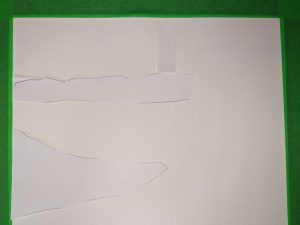
5. Glue the Templates
Glue temporarily to watercolor paper. We use Elmer’s Repositionable Craftbond glue for this.
Tape the watercolor paper to a surface to stay flat while painting.
An alternative to templates would be to draw the outline of the rocks and lighthouse on the watercolor paper lightly with a pencil or even with an ink pen if visible outlines are desired in the final painting. If an ink pen is used, be sure the ink is dry before putting any water on the page. It sometimes takes a while for the ink to be truly moisture resistant, depending on the pen brand. Test on a scrap if unsure of the drying time.
6. Draw a Line
Decide whether to paint the sky first or the water first. Wet down the first area and paint a line at the border of the two areas to remind the artist where the sky ends, and the water begins.
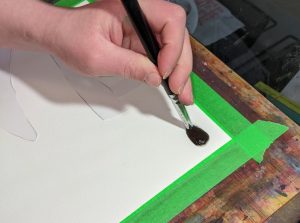
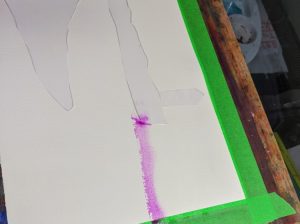
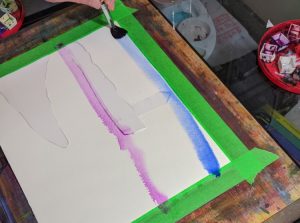
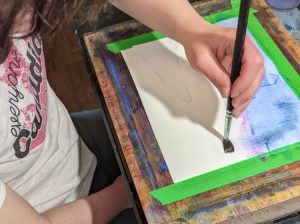
7. Apply the Paint
Apply desired paint to the sky or the water. Then wet down the unpainted area and apply desired paints.
8. Remove the Templates
Remove the templates. Allow the sky and water to dry for a while.
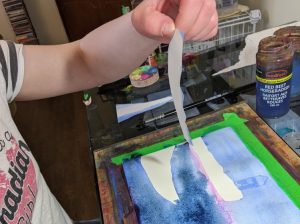
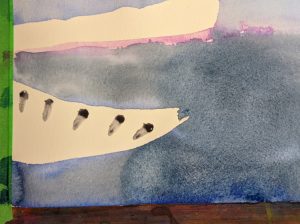
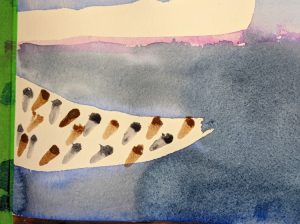
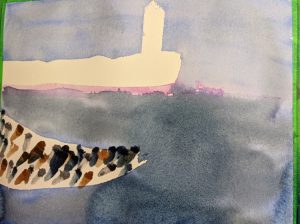
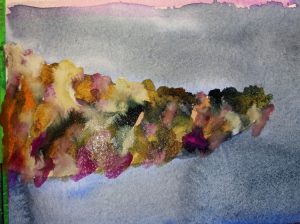
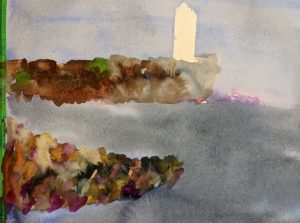
9. Paint the Rocks
To paint the rocks, leave the rock formation areas dry. Using a brush of choice, apply dabs of a color separated from each other by unpainted space at first.
Then go back and fill in the unpainted spots with another color, once again leaving some unpainted spots in between.
This can be repeated several times depending on how many colors are used and how big the brush is.
Eventually, these dabs will touch each other and blend a bit into one another, creating an interesting textured rocky effect.
Suggested colors to use for the rocks are dark grey, light grey, brown, and dark blue – but try whatever is desired.
Have fun and experiment with different colors. Rita threw in some fuchsia, green and orange.
10. Paint the Lighthouse
Let the rocks dry and finally paint the lighthouse.
